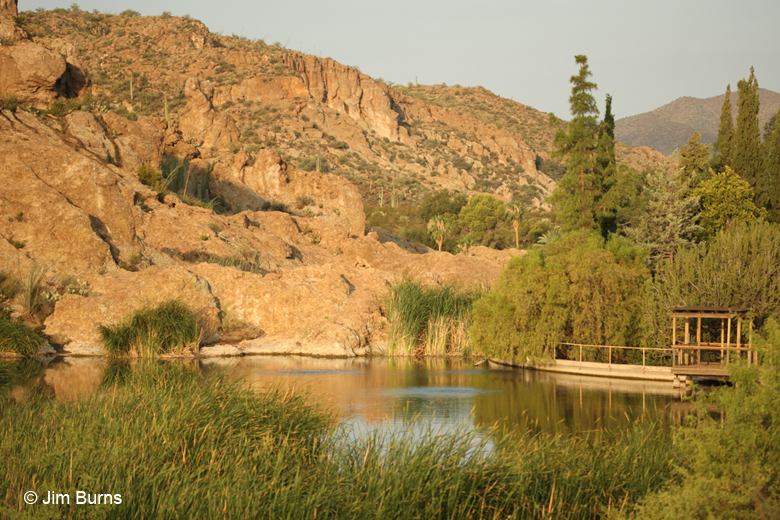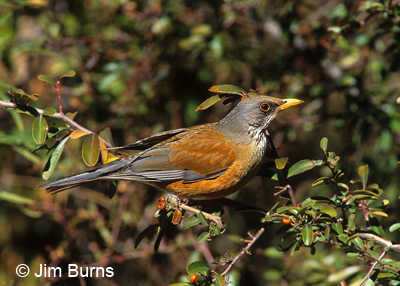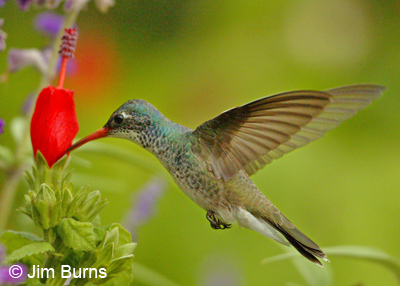|
El Catrin |
So, you're a birder but you're also a fall color junkie and you're kicking yourself because you didn't make it up to the White Mountains at the end of September, and then you missed the Pinals at the end of October too. Well, you're in luck because Arizona's fall colors, like some of its birds, "migrate" altitudinally, flowing down the mountains as autumn progresses, and there's a great birding venue closer to the Valley where fall colors peak on Thanksgiving weekend.
Boyce Thompson Arboretum State Park (BTA), less than an hour east of Phoenix, has been the winter home over past years for many exciting, vagrant "snowbirds" from the north, the east, and even from south of the border. From the mountains to the north BTA has hosted species like Clark's nutcracker and varied thrush, and the wintering white-crowned sparrow flocks usually include a surprise like a white-throated or a fox sparrow.
For several consecutive years a brown thrasher, an unexpected eastern vagrant, has shown up near the Herb Garden at BTA in late fall, and a rufous-backed robin from Mexico has been almost as predictable. Persistent birders always try to complete the "wren challenge" at BTA where seven of the nine North American wren species can be found in winter: house, winter, Bewick's. cactus, rock, canyon, and marsh. Winter wren, the smallest, is the biggest prize because it is the least regular and the most secretive of the seven. Look for this diminutive visitor from the north in the brush tangles along Queen Creek.
A recent and fascinating addition to BTA's birdlist is the broad-billed hummingbird, a Mexican species typically found only as far north as southern Arizona's "sky islands." Broad-billeds began showing up at BTA in the late '90s and breeding was confirmed in 2002. The latest chapter to this exciting BTA back story was the discovery, in the fall of 2006, of a broad-billed x violet-crowned hybrid, only the second such hybrid hummingbird ever documented. Dubbed "El Catrin" by BTA staff for its beauty and showmanship, it is still seen daily feeding around the Turk's Cap in the hummingbird garden.
There's a reason BTA is so attractive to out-of-region avian species this time of year. It's an oasis of trees, water, and greenery in a harsh, dry high desert environment. Many of those trees, both native and exotic, produce fruit that sustains these birds through the winter, and many of those same trees and plants explode in color which peaks in about three weeks.
Here's the palette: Chinese pistachios climax in brilliant red, Arizona sycamores go orange, honey locust a copper gold, and the pomegranate hedges that line the path through the Herb Garden turn bright yellow. Just west of the Herb Garden are the Pyracantha bushes, laden with the deep red berries so attractive to the birds. Even if the thrasher and the robin don't show up this year, northern cardinals, spotted towhees, and hermit thrushes are winter time guarantees.
Autumn color at BTA is so reliable that the park has an annual event, the Fall Foliage Finale, this year on November 29 and 30, which includes hot spiced apple cider and live music. Or go on Thanksgiving Day itself. The park will be open and most people may be off doing more traditional family things, so the real snowbirds will be easier to find along uncrowded trails.
Boyce Thompson in late autumn is the Valley birders' candy store--lots of birds in diverse habitats, the opportunity to study similar species side by side, and the possibility around every bend in the trail for a rare vagrant. All this and BTA's fall foliage rivals that of New England. Sit and relax amidst stunning color by any of the arboretum's several water features. The birds will come to you to bathe or drink. It may be late autumn, but you haven't missed a thing.

